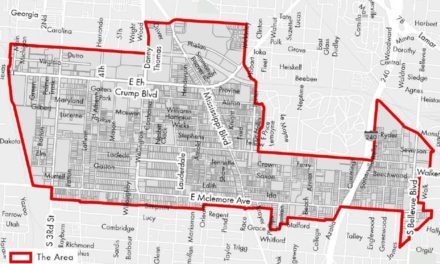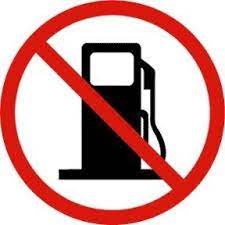In our last post, we wrote about the need for the powers-that-be to reacquaint themselves with the recommendations in the Memphis regional sourcebook, to celebrate what was achieved, and to organize around what is left to do.
Add to that required reading list Community LIFT’s Core City Incentives Report, which features 12 short-term and long-term recommendations that should be uppermost in the minds of anyone who cares about the future of Memphis. The report, sponsored by the Surdna Foundation, is the latest milestone in the ambitious – and crucial – work of Community LIFT, which has three target areas: Upper South Memphis, Frayser, and Greater Binghampton.
In essence, Community LIFT is a neighborhood rebuilding program that aspires to revitalize distressed neighborhoods, develop the capacity of its people, improve the economy, ensure the residential health of the areas, and improve their quality of life.
Local Landscape
The prelude to the recommendations includes an assessment of the local landscape, which it described as follows:
* Tennessee and Memphis have relatively small venture capital sources, but there appears to be some momentum in biosciences and technology.
* SBA lending in Memphis has been limited when compared to other cities (but it appears to be increasing).
* Local sources of small business capital also appear to be increasing and should be an incentive for businesses to locate in the core city
* The overall size of the philanthropic community is small compared to other cities, and only one national foundation awarding community improvement and development grants is focused on Memphis.
* Despite some recent wins, Memphis, as a city and as a region, has underperformed in attracting federal resources.
* City of Memphis does not have an organized process for tracking federal money and trends.
* 40% of Memphis firms are owned by African-Americans but of firms without employees, black firms account for 47% and only 8% for firms with employees.
* Memphis ranks #44 out of 50 largest cities in “graduation” rates for African-American firms that move from the without employees category to the firms with employees category.
* The Memphis region’s vacancy rates (15%) exceed national averages and ranks as the fourth worse out of 75 regions.
The Dozen
After the analysis of Memphis, the report – prepared by Mass Economics’ Teresa Lynch – makes 12 recommendations for pilot initiatives:
1. Revise/create a new PILOT program in targeted, strategic areas
2. Revise/create an installment plan policy for small business utility costs
3. Launch a façade program for commercial corridors
4. Develop a tenant improvement program
5. Designate a portion of loan funds toward a core city loan product
6. Provide urban market analysis and data to inner city businesses
7. Expand Local business-to-business efforts to a larger Memphis-to-Memphis initiative
8. Expand the Special Opportunities Counties Fund to targeted urban areas
9. Scale down the Valley Investment Initiative to include small businesses
10. Revise job incentive programs to benefit inner city, small businesses
11. Study the feasibility of employment districts
12. Align with longer-term planning processes
Call To Arms
The ideas that intrigued us were the ones that essentially replicated the incentives of the Downtown Memphis Commission and applied them to the LIFT neighborhoods. These included tax freezes and façade loans. It’s hard to argue that the LIFT neighborhoods don’t deserve the same attention as downtown Memphis, and based on their current situation, the truth is that they deserve more.
The Core City Incentives Report is logical, in that Community LIFT needs incentives to be successful, and it is doable, in that the recommendations call for pilot programs so they can be tested and assessed.
The report is nothing less than a call to action, but it is impossible to read the recommendations without wondering who will take responsibility for the policy changes that are necessary to make them happen. Too often, in Memphis, writing the report tends to be seen as the outcome, but Community LIFT has shown in its short life that it’s not willing to settle for business as usual.
That said, this time, it can’t implement these recommendations without help from multiple public, quasi-public, and private, nonprofit organizations. Community LIFT deserves the opportunity to prove that its approach is right, but more to the point, these neighborhoods deserve it.
Cartographers
We sometimes wonder what globalization means to a non-global city like ours, but there’s little argument that these neighborhoods are completely off the regional grid, much less the global one. Meanwhile, it is clear that the days when he federal government or state government would ride in like the cavalry to rescue Memphis or its neighborhoods are over. That’s why it’s crucial to align the policies and shape the strategies to control our own destiny.
There’s not a roadmap for Community LIFT to unfold and follow. Rather, it is creating its own, and it can’t depend on everyone doing the right thing for it to succeed. Instead, it requires policy makers to step forward and to do whatever has to be done for the recommendations to be implemented.
Local policies have for too long tilted the playing field in favor of corporations, which have unequal and inequitable access to a system of incentives, public funds, and other resources. Implementing the recommendations of this report would be a big step in the right direction.







So, how much is this gonna cost?
thought so.
Anon-
You asked the question then assumed the answer. Care to share?
Anonymous 9:13 – The strength of the recommendations to us is that they don’t invent a lot of new programs but expand those that already exist and that can be refined to make them more effective for Memphis neighborhoods. As we have said often, it’s not that we aren’t spending enough money around here – we just aren’t spending it as effectively as we can or aiming it at the targets with the most impact. If these kinds of programs are good enough for corporations and businesses with influence and access, we are hard-pressed to imagine why they aren’t good enough for these neighborhoods.
We presume that it goes without saying that we have to fight for neighborhoods since they are the backbone for the entire city, and in the long-term, if we can revitalize these neighborhoods, it probably will cost less.
Coincidentally, we got an email from a friend with a book that might be interesting in light of this subject:
http://www.upenn.edu/pennpress/book/15044.html
The City After Abandonment brings together essays from top urban planning experts to focus on policy and planning issues related to three questions. What are cities becoming after abandonment? The rise of community gardens and artists’ installations in Detroit and St. Louis reveal numerous unexamined impacts of population decline on the development of these cities. Why these outcomes? By analyzing post-hurricane policy in New Orleans, the acceptance of becoming a smaller city in Youngstown, Ohio, and targeted assistance to small areas of Baltimore, Cleveland, and Detroit, this book assesses how varied institutions and policies affect the process of change in cities where demand for property is very weak. What should abandoned areas of cities become? Assuming growth is not a choice, this book assesses widely cited formulas for addressing vacancy; analyzes the sustainability plans of Cleveland, Buffalo, Philadelphia, and Baltimore; suggests an urban design scheme for shrinking cities; and lays out ways policymakers and planners can approach the future through processes and ideas that differ from those in growing cities.
Margaret Dewar is Professor of Urban and Regional Planning at Taubman College of Architecture and Urban Planning, University of Michigan, and author of numerous articles about cities in decline.
June Manning Thomas is Centennial Professor of Urban and Regional Planning at Taubman College of Architecture and Urban Planning, University of Michigan, and author of many books, including Planning Progress: Lessons from Shoghi Effendi and Redevelopment and Race: Planning a Finer City in Postwar Detroit.
It will certainly cost you less than if you do not do it. Smart growth and smart reinvestment make good financial sense.
Community LIFT helps to leverage national grant money to fund their projects.